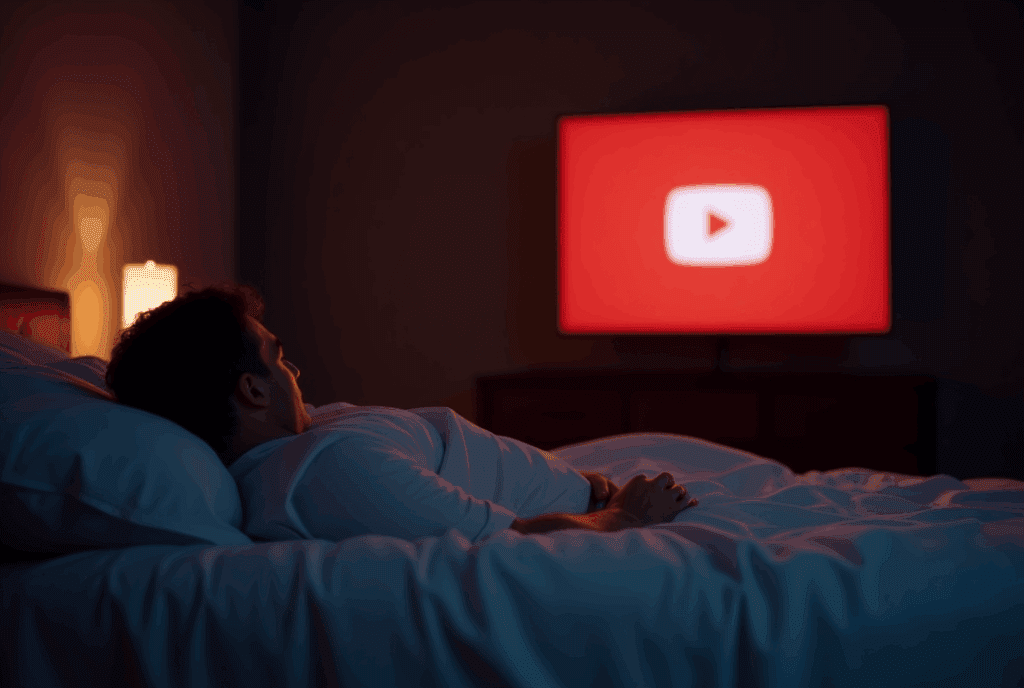In our fast-paced lives, many of us struggle to wind down at the end of the day. We’ve noticed how soothing videos can transform our pre-sleep routine, offering a calming escape from daily stressors. These visuals not only create a serene atmosphere but also engage our senses in a way that promotes relaxation. So, what is it about these videos that makes them so effective for achieving restful sleep?
Why Sleep Videos Are Gaining Popularity
In today’s fast-paced world, many of us struggle to unwind after a long day, making sleep videos increasingly popular. These videos offer a simple way to incorporate mindfulness practices into our nightly routines. By engaging with calming visuals and sounds, we can create a peaceful environment that promotes relaxation and helps us disconnect from daily stressors.
Sleep science shows that visual stimuli can influence our brain’s ability to relax, making sleep videos an effective tool. As we watch serene landscapes or gentle animations, our minds shift focus, allowing us to leave our worries behind.
Moreover, integrating mindfulness practices through these videos encourages us to be present, reducing anxiety and fostering a sense of calm. As we immerse ourselves in this tranquil experience, we find it easier to drift off into restorative sleep. It’s no wonder that sleep videos have become a go-to resource for many seeking better rest.
What Makes Visual Cues Effective for Relaxation
When we immerse ourselves in soothing visual cues, our brains respond by triggering relaxation pathways that can significantly reduce stress. This phenomenon highlights the power of visual perception in shaping our emotional states. Soft colors, gentle movements, and nature scenes create a serene environment that invites calmness. As we engage with these images, our bodies naturally initiate a relaxation response, lowering our heart rates and decreasing anxiety.
We might notice that certain visuals resonate more deeply, perhaps a flowing river or a tranquil forest. These scenes not only distract us from daily stressors but also foster a sense of safety and peace. The brain, in its quest for harmony, finds comfort in these visuals, enhancing our overall well-being. By incorporating soothing videos into our routine, we can effectively harness visual perception to cultivate a more relaxed state of mind and ease into restful sleep.
How Sleep Videos Impact the Brain Before Bed
As we settle in for the night, sleep videos can profoundly influence how our brains prepare for rest. These calming visuals help reduce brain activity, signaling our minds to unwind and transition into a more relaxed state. By engaging with soothing imagery and sounds, we create a serene environment that fosters deeper relaxation.
Research shows that watching sleep videos can enhance sleep quality, as they encourage the production of melatonin, a hormone crucial for sleep regulation. This calming effect not only helps us drift off faster but also promotes a more restorative sleep cycle.
Incorporating these videos into our bedtime routine can also lessen anxiety and racing thoughts, which often interfere with our ability to fall asleep. By intentionally choosing sleep videos, we’re actively supporting our brains in their quest for tranquility and a restful night’s sleep.
Different Types of Videos That Help With Sleep
While we explore the various types of videos that promote sleep, it’s essential to recognize how each genre can cater to different preferences and needs. For those who love tranquility, videos showcasing nature landscapes, like serene forests or gentle ocean waves, can transport us to peaceful places. Calming animations also provide a visual escape, using soft colors and slow movements to ease our minds.
If we’re seeking a more interactive approach, guided meditations can help us focus on our breath, drawing us away from the day’s worries. These videos often combine soothing voices with calming visuals, making it easier to unwind. Lastly, ASMR experiences can trigger relaxation through gentle sounds like whispering or tapping, creating a comforting atmosphere. By exploring these various types, we can find the perfect video to help us drift off into a restful slumber.
When and How to Watch Sleep Videos for Best Results
To achieve the best results with sleep videos, we should consider both timing and environment. Ideally, we want to watch these videos about 30 minutes before we plan to sleep. This allows our minds to unwind and transition into a more relaxed state. By incorporating this ideal timing, we enhance the effectiveness of the videos.
Next, let’s think about our viewing environment. We should create a cozy, dimly lit space free from distractions. This means turning off bright lights and silencing our phones. We might even consider using headphones for a more immersive experience.
As we settle in, let’s focus on our breath and let the soothing visuals wash over us. By being mindful of when and where we watch sleep videos, we can significantly improve our chances of drifting off into a restful slumber.
Other Techniques to Pair With Video for Deeper Rest
Incorporating other relaxation techniques can enhance our experience with sleep videos, making it easier for us to achieve deeper rest. One effective method is guided meditation, which helps us focus our minds and release the day’s stress. As we settle in, we can also practice breathing exercises, taking slow, deep breaths to calm our nervous system and prepare for sleep.
Aromatherapy practices can further elevate our relaxation. Using essential oils like lavender or chamomile, we can create a soothing atmosphere that complements the visuals of our sleep videos. Finally, pairing calming music with our chosen video can create an immersive experience, enveloping us in tranquility.
Should You Use Sleep Videos in Your Night Routine?
How can we determine if sleep videos belong in our night routine? We should first consider our sleep hygiene and how these videos fit into our bedtime rituals. If we find that soothing visuals or calming sounds help us unwind, then incorporating them can enhance our relaxation process.
We can experiment with different types of sleep videos, noting how they affect our ability to drift off. Are we less restless and more at ease afterward? If so, this could be a sign that they’re beneficial for us.
However, it’s essential to ensure that these videos don’t replace other healthy habits. Maintaining a balance is crucial, so we should still prioritize activities like reading or meditating.
Ultimately, if sleep videos become a comforting part of our routine, they might just be what we need for a restful night’s sleep. Let’s give them a try and see how we feel!




